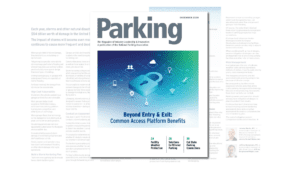
Facility Preparedness Strategies to Protect Your Assets From Bad Weather (Parking Magazine December 2020)
The impact of storms will become even more severe as climate change continues to cause more frequent and deadly extreme weather.
Learn from award-winning professionals — explore our whitepapers, blogs, and the latest industry updates.
Join our dynamic organization of engineers, land surveyors, landscape architects, environmental scientists, and architects!
Talk to a market leader today! We’ll answer any questions you have about our professional services.
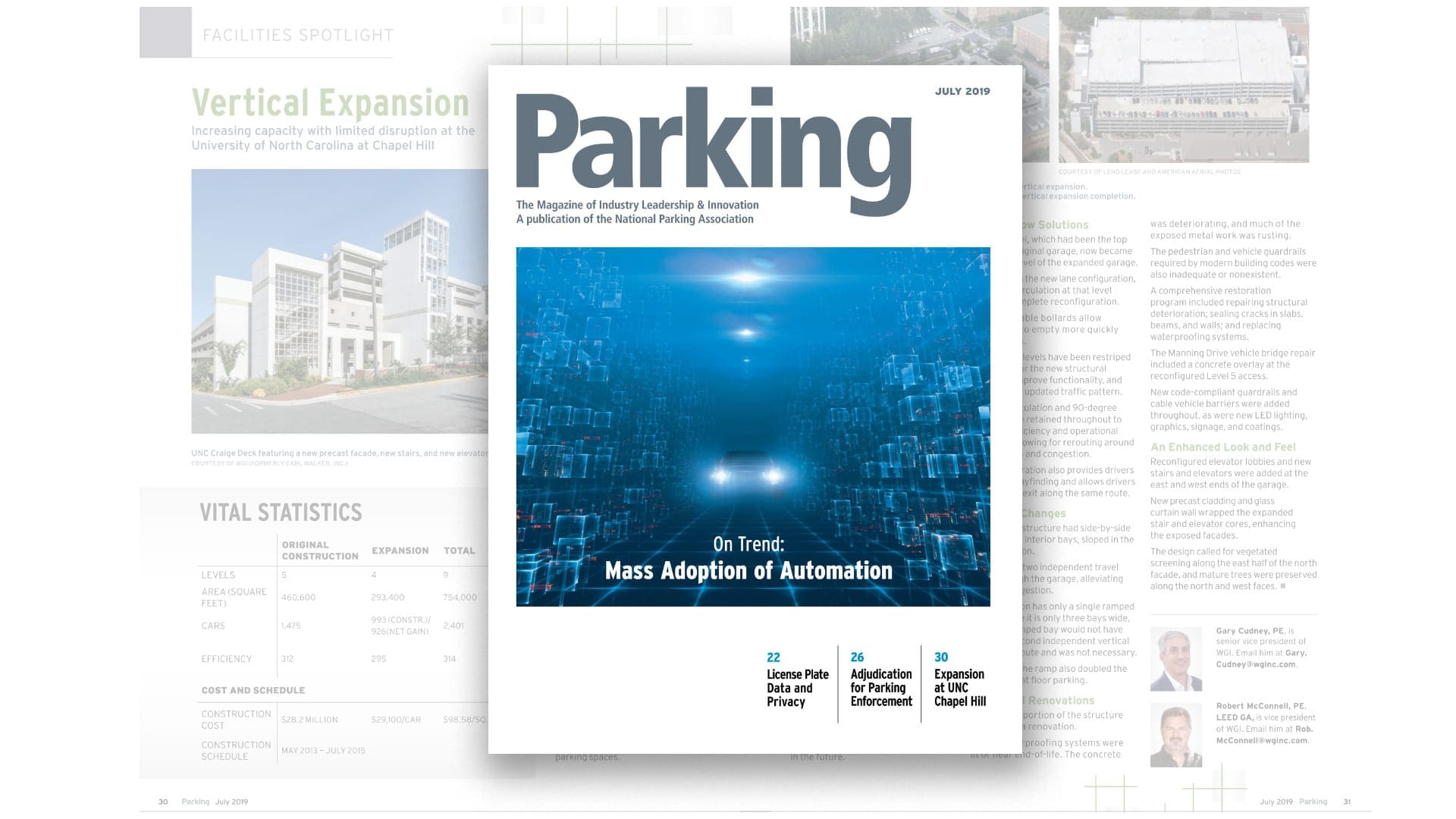
This article appeared in the July 2019 issue of Parking Magazine. Click here to view the full issue.
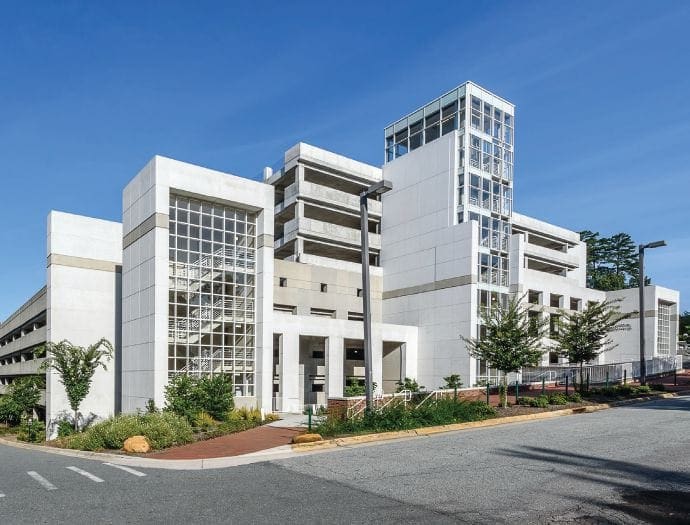
The University of North Carolina at Chapel Hill (UNC) administration had limited choices for adding parking for a growing university population. The campus is landlocked with almost no undeveloped and unallocated space.
The five-level parking deck next to the Craige residence hall offered the best solution for parking expansion since the university needed 600 to 900 more parking spaces in that part of campus. The existing garage structure and systems had been maintained reasonably well, but the structure, built in the early 1990s, was beginning to show age. However, the facility was serviceable, and complete replacement was too costly and at odds with UNC’s sustainability practices. Replacement would also require displacing all the cars in the deck for two years. Instead, UNC investigated vertically expanding the existing structure while keeping the facility open.
The university chose WGI (formerly Carl Walker, Inc.) to provide innovative structural engineering for this complex project as well as parking consulting, functional design, and restoration engineering services. WGI, along with Little Diversified Architectural Consulting and LeChase Construction Services (formerly Lend Lease), developed a practical, cost effective design that minimally disrupted the ongoing parking operation.
The structure needed four new levels to achieve the desired net gain of parking spaces. However, life-safety and structural building code requirements had dramatically changed since the structure’s design in 1988. The original structure’s cast-in-place, post-tensioned concrete construction did not anticipate expansion. The original expansion joint locations and sizes also posed a challenge.
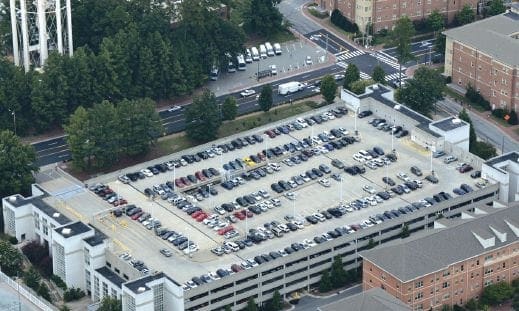
The project required strengthening the structural frame, modifying the expansion joints, and underpinning the foundations. Ultimately, all the foundations were underpinned with micropiles, several expansion joints were “stitched” closed, columns were strengthened, and additional concrete shear frames were constructed throughout the garage. High-performance lightweight concrete was used at the new levels to reduce gravity and earthquake loads while improving fire resistance.
The garage sees high-volume use, especially during football and basketball games, which affects traffic flow within the garage. To accommodate all vehicles, the expanded garage needed additional entry and exit lane capacity at the fifth-level Manning Drive access. Vehicle-access lanes and equipment were relocated onto the deck itself, allowing for a reversible third lane. New gates and card-access PARCS equipment were installed and integrated into the campuswide system. The design included provisions to add automated vehicle identification in the future.
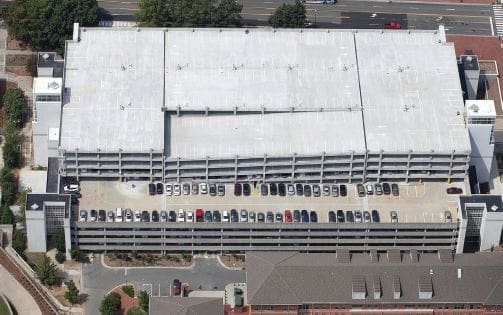
The fifth level, which had been the top tier of the original garage, now became the middle level of the expanded garage. Coupled with the new lane configuration, the traffic circulation at that level required complete reconfiguration. New removable bollards allow the garage to empty more quickly after events. The existing levels have been restriped to account for the new structural elements, improve functionality, and facilitate the updated traffic pattern. Two-way circulation and 90-degree parking were retained throughout to preserve efficiency and operational flexibility, allowing for rerouting around obstructions and congestion. This configuration also provides drivers with clear wayfinding and allows drivers to enter and exit along the same route.
The original structure had side-by-side ramps at the interior bays, sloped in the same direction. This offered two independent travel paths through the garage, alleviating internal congestion. The expansion has only a single ramped bay. Because it is only three bays wide, a second ramped bay would not have created a second independent vertical circulation route and was not necessary. Eliminating the ramp also doubled the amount of flat floor parking.
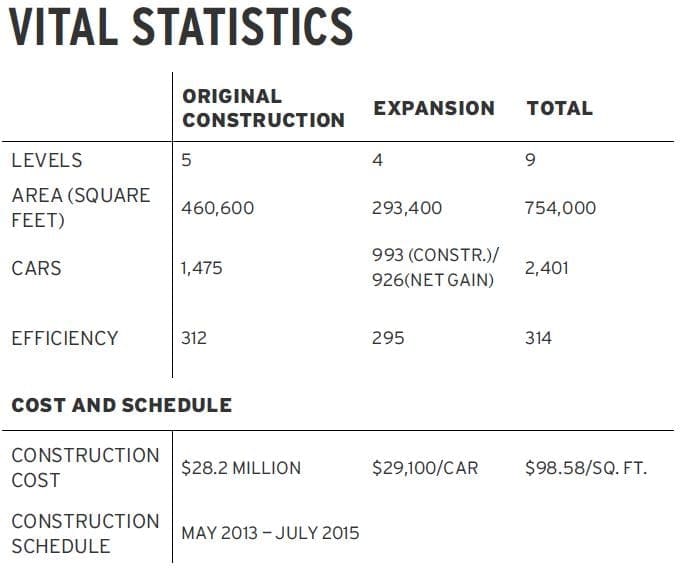
The original portion of the structure was due for a renovation. All the waterproofing systems were at or near end-of-life. The concrete was deteriorating, and much of the exposed metal work was rusting. The pedestrian and vehicle guardrails required by modern building codes were also inadequate or nonexistent. A comprehensive restoration program included repairing structural deterioration; sealing cracks in slabs, beams, and walls; and replacing waterproofing systems. The Manning Drive vehicle bridge repair included a concrete overlay at the reconfigured Level 5 access. New code-compliant guardrails and cable vehicle barriers were added throughout, as were new LED lighting, graphics, signage, and coatings.
Reconfigured elevator lobbies and new stairs and elevators were added at the east and west ends of the garage. New precast cladding and glass curtain wall wrapped the expanded stair and elevator cores, enhancing the exposed facades. The design called for vegetated screening along the east half of the north facade, and mature trees were preserved along the north and west faces.
Contact Gary Cudney, PE or Robert McConnell, PE, LEED GA to learn how WGI can help you with your next project.

WGI is a national design and professional services firm leading in technology-based solutions for the construction of public infrastructure and real estate development. At WGI, we’re providing Tomorrow’s Infrastructure Solutions Today.

The impact of storms will become even more severe as climate change continues to cause more frequent and deadly extreme weather.

As retail morphs into “e-tail”, parking designs must be adaptable. Discover how a simple rework and reflow of current parking options can aid retailers in meeting new customer demands.
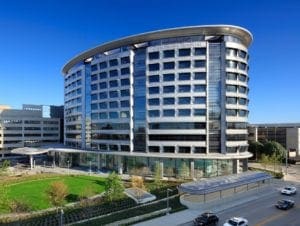
Strategies for a Healthier Parking Facility. Promote public health and protect patrons with these operational management strategies.
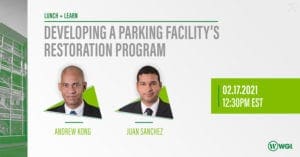
In this session of WGI’s Webinar Series, our restoration experts discussed the leading causes of deterioration and potential structural failures in various types of parking structures, and how restoration programs can increase the safety and lifespan of parking facilities.
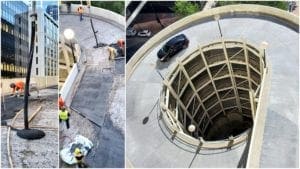
Selecting a qualified and experienced restoration consultant is vital to a project’s overall success. This expert case study details the steps to develop an effective rehabilitation program.
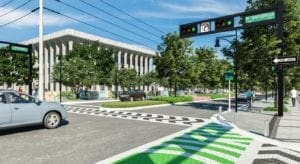
Discover the 3D design software breakthroughs that are enabling designers to accomplish things that CAD users could only dream about.
You’ve been searching for a place like WGI. We look forward to meeting you soon.
Sign up to receive emails to hear our latest news and achievements in our monthly newsletter.
Enter your zip code, and we’ll personalize your experience with local projects, office locations, team members, and more.
WGI supports its associates with meaningful opportunities for growth, strong benefits and perks, while we work collaboratively with clients and co-consultants to shape and improve communities.






WGI is a dynamic organization with opportunities nationwide for engineers, land surveyors, landscape architects, environmental scientists, and architects.